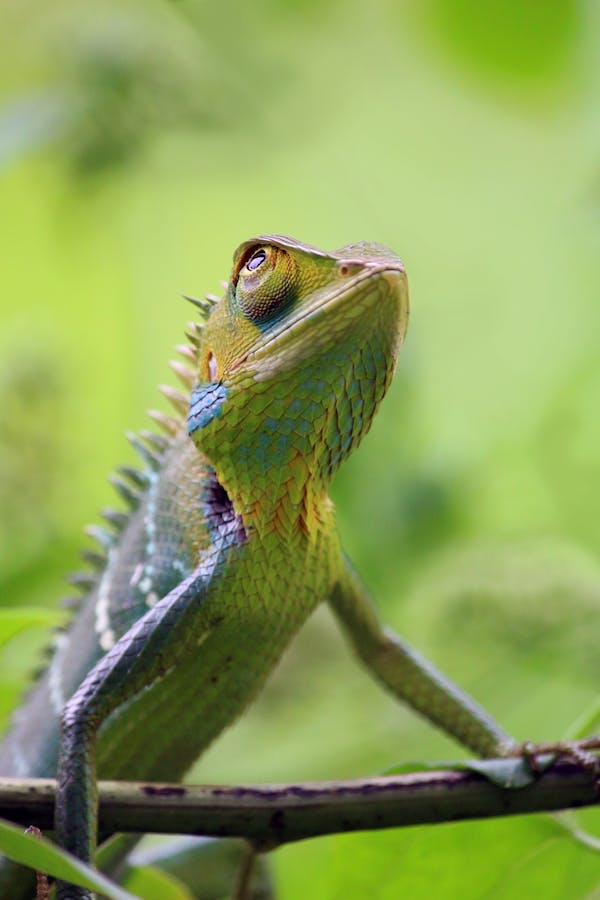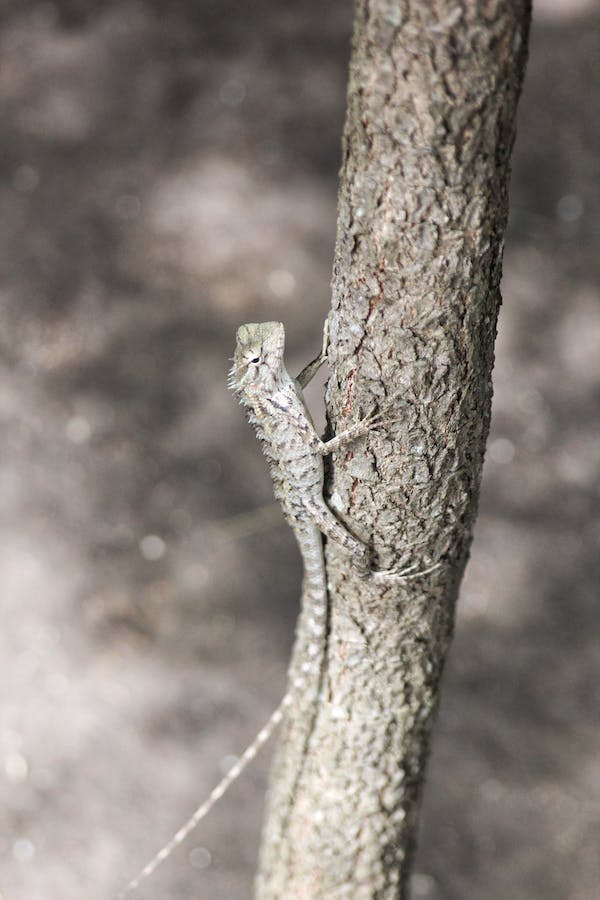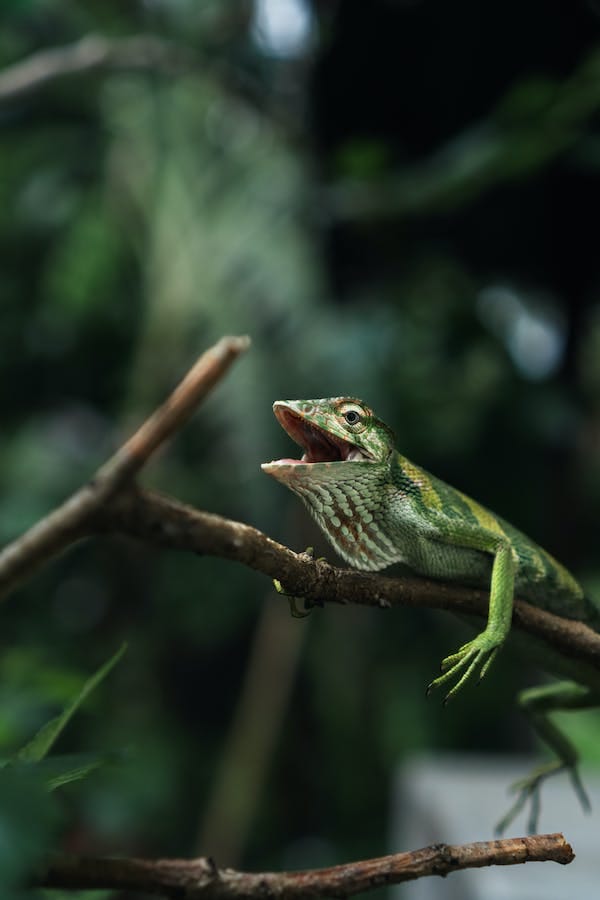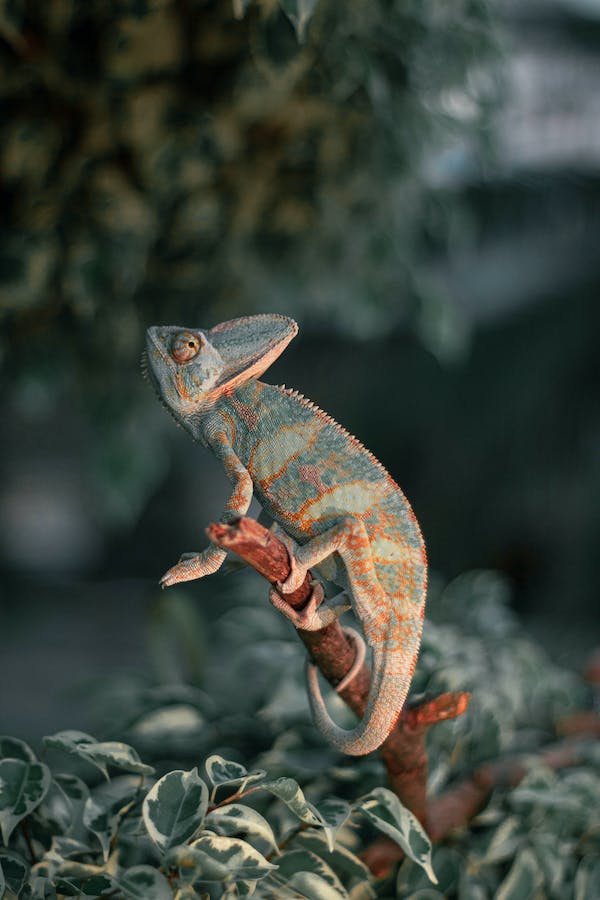
Exploring the world of chameleons as potential pets unveils a fascinating journey into the realm of unique reptiles.
As their popularity grows, it becomes paramount for aspiring chameleon owners to grasp the specific needs and requirements that underpin the well-being of these captivating creatures.
This blog post is dedicated to shedding light on crucial considerations before acquiring a chameleon, addressing their compatibility with children, and offering insights into providing optimal care for your newfound pet chameleon.
Can You Buy a Chameleon as a Pet?
Certainly, chameleons are indeed kept as pets, but embarking on this journey requires careful consideration and dedication to their unique needs.
Prior to acquiring a chameleon, extensive research is essential.
This ensures that potential owners have a comprehensive understanding of the specific care and attention these remarkable reptiles demand.
By approaching pet ownership with knowledge and preparedness, individuals can establish a healthy and harmonious relationship with their chameleon companions.
- Read also: 10+ Interesting Lizard Facts That Will Surprise You
- Read also: 6 Great Pet Reptiles for Beginners

Things to Know Before Buying a Chameleon
Owning a chameleon is an exciting venture, but ensuring their well-being involves attention to specific details.
Here’s a comprehensive guide to what you should know before adding a chameleon to your home:
Habitat
Chameleons thrive in spacious enclosures that mimic their natural habitat.
Providing ample room for climbing and exploration is crucial.
Include a suitable substrate, such as paper towels or soil, and a water dish for hydration.
Temperature and humidity
As cold-blooded creatures, chameleons depend on a regulated environment.
Maintain a temperature range of approximately 70-80°F within their habitat.
Additionally, ensure the right humidity levels to prevent respiratory issues, a common concern for these reptiles.
Lighting
Adequate lighting is vital for chameleons to synthesize vitamin D3.
Offer bright, indirect light in their enclosure, and consider using a UVB light source.
This facilitates efficient vitamin D3 production, essential for their overall health.
Food
Chameleons are primarily insectivores, meaning their diet should consist mainly of small insects.
Crickets, mealworms, and fruit flies are excellent choices.
Providing a well-rounded and nutritious diet is key to their growth and vitality.
Handling
Chameleons, by nature, can be shy and may not enjoy frequent handling.
When necessary, approach them with gentleness and care.
Limit handling to avoid stress, allowing your chameleon to acclimate to its environment comfortably.
What Are The Benefits of Owning a Chameleon as a Pet?

Owning a chameleon as a pet comes with several benefits, making them an attractive choice for reptile enthusiasts.
Some of the advantages of owning a chameleon as a pet include:
Low Maintenance
Chameleons are renowned for their low-maintenance nature, requiring minimal interaction and handling.
This characteristic makes them ideal for individuals who prefer observing their pets from a distance, appreciating the beauty of their natural behaviors.
Aesthetically pleasing
With their ability to change color and unique physical features, chameleons serve as visually striking and captivating display animals.
Their presence adds a touch of beauty to home or office environments, making them a unique and aesthetically pleasing choice.
Quiet and small
The modest size of chameleons makes them suitable for smaller living spaces, such as apartments.
Their quiet demeanor further enhances their appeal, creating a peaceful living environment for those who value tranquility.
Educational value
Chameleons offer an excellent educational experience for enthusiasts keen on learning about reptiles.
Observing their color changes and distinctive movements provides both entertainment and valuable insights into the fascinating world of these creatures.
Fascinating to watch
Chameleons exhibit captivating behaviors, from independently moving eyes to unique hunting techniques.
These distinctive traits make them fascinating pets to observe and study, enhancing the overall experience of having them as part of your household.
Is it Hard to Keep a Chameleon as a Pet?
Caring for a pet chameleon presents challenges owing to their distinctive care needs and the likelihood of them being reserved and easily startled.
However, by addressing their specific requirements in terms of housing, nutrition, and interaction, chameleons can become fitting companions for individuals ready to commit to their unique needs.
The care of a pet chameleon requires a thoughtful approach due to their particular demands.
Chameleons may exhibit shyness and skittish behavior, adding an extra layer of consideration for their well-being.
Yet, with diligent attention to factors like appropriate housing, tailored feeding regimens, and gentle handling, individuals can successfully navigate the challenges and provide a suitable environment for these captivating reptiles.

Is a Chameleon a Good Pet for a Child?
While chameleons possess unique qualities, they may not be the most suitable pets for children.
Their shy nature and fragility make them less resilient to the exuberance of child interaction.
Handling a chameleon requires utmost gentleness, and constant supervision is imperative to avert potential accidents or unintended mistreatment.
The distinctive characteristics of chameleons demand a level of care and caution that may not align with the dynamic nature of a child’s interaction with a pet.
It’s essential to consider the temperament of the chameleon and ensure that children understand and adhere to the need for delicate handling and vigilant supervision.
In doing so, the well-being of both the chameleon and the child can be prioritized, fostering a safe and respectful environment for both.
What Are The Common Health Issues That Chameleons Face as Pets?
Chameleons, as pets, are susceptible to various health issues. Some of the common health issues that chameleons face as pets include:
- Parasites: Chameleons can harbor gastrointestinal parasites, and yearly fecal tests by a veterinarian are recommended to detect and treat parasites.
- Kidney failure and gout: Kidney failure is a common cause of death in pet chameleons. Signs of kidney issues include pacing, lethargy, anorexia, and aggression. Gout can also be a problem, causing symptoms such as swollen joints and difficulty shedding.
- Upper respiratory infections: These infections are common among pet chameleons and are typically caused by environmental factors. Signs include a gaped mouth, excessive mucus, popping or wheezing sounds, and inflammation and bubbling around the mouth and nose.
- Dehydration: Chameleons drink water from leaves, so it’s essential to provide a water source, such as misting or a drip system, to ensure they stay hydrated.
- Thermal burns: Chameleons can suffer from thermal burns, which can be caused by direct sunlight or heat from a light source. Providing a suitable enclosure with proper ventilation can help prevent this issue.
- Egg retention: Chameleons can sometimes retain eggs, leading to complications. Ensuring the chameleon is well-fed and providing a suitable environment can help prevent egg retention.
- Stomatitis: Stomatitis, or inflammation of the mouth, can be caused by poor hygiene or stress. Regular cleaning of the enclosure and providing a stress-free environment can help prevent this issue.
- Metabolic bone disease (MBD): MBD is a common issue among chameleons, which can lead to bone issues and impaired calcium absorption. Providing a diet rich in calcium and vitamin D3, as well as UVB lighting, can help prevent MBD.

Conclusion
Acquiring a chameleon as a pet marks a substantial commitment, necessitating thorough preparation for their specific care requirements.
A fulfilling relationship with your chameleon companion is achievable through a keen understanding of their needs and the provision of an appropriate environment.
By ensuring a tailored and attentive approach to their care, you pave the way for a gratifying and harmonious bond with your chameleon companion.
- Read also: Discover The Joy Of Owning A Reptile
- Read also: 550+ Best Chameleon Names
FAQs
Chameleons are primarily insectivores, and their diet should consist of small insects such as crickets, mealworms, and fruit flies.
Chameleons can be shy and may not enjoy being handled. It’s essential to handle them gently and only when necessary.
The average lifespan of a chameleon is around two to three years, but they can live up to five years if well cared for.


GIPHY App Key not set. Please check settings